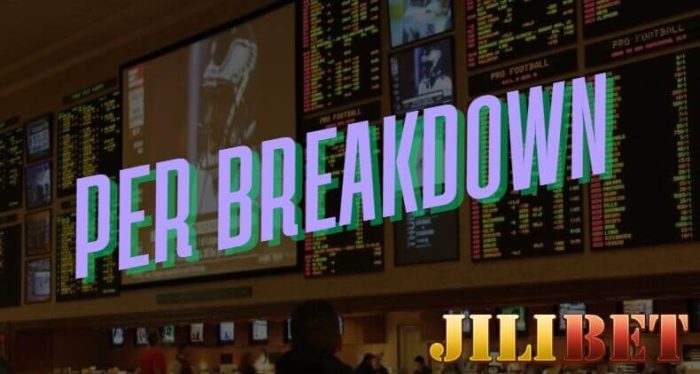In the world of online gambling, the thrill of the game is often accompanied by a slew of terms and strategies that can make or break your betting experience. One of the most powerful concepts out there—especially if you’re betting on a platform like Jilibet, where serious players come to play—is CLV, or Closing Line Value. It might not be flashy or exciting at first glance, but trust us—if you’re ignoring CLV, you’re not even playing the same game as the pros.
What Is CLV, Exactly?
CLV stands for Closing Line Value—the difference between the odds you got when you placed your bet, and the final odds right before the game starts. The closing line is considered the most accurate, most efficient reflection of all available info: injuries, betting volume, weather, public sentiment—you name it.

Let’s say:
- You bet Lakers -3.5 on Monday.
- By game time, the line moves to Lakers -5.5.
That means you beat the closing line. That’s called getting positive CLV. And no, that’s not just luck—it means you spotted market value before everyone else did.
Why CLV Matters More Than You Think
The importance of CLV cannot be overstated. Studies show that bettors who consistently achieve positive CLV over time are far more likely to turn a profit than those who ignore this critical metric. This is especially true for sharp bettors, who understand that the lines are set by bookmakers based on public perception, betting patterns, and their own information. By betting against the public sentiment and exploiting value discrepancies in the odds, sharp bettors can gain a significant edge.
In short, CLV is the most reliable indicator of whether a bettor actually has an edge.
Sure, anyone can win a few bets by luck—but only sharp players can consistently grab value before the market adjusts. And here’s the wild part:
You don’t need to win every single bet. As long as your CLV is positive in the long run, you’re winning.
The Math Behind CLV
Let’s break it down with a simple example. Say you’re betting NBA spreads at -110 (you bet $110 to win $100).
If you’re always betting right at the closing line, your expected return is 0%. You’re just flipping a coin.
But if you’re regularly getting lines that are half a point better than the close, data and simulations show your ROI (Return on Investment) could hit 1.5% to 2.5%.
Beat the line by a full point consistently? You could be looking at 3% to 4% ROI.
In the world of pro betting, those numbers are lethal.
How to Calculate CLV
At its core, CLV represents the difference between the odds at which a bettor places a wager and the final odds just before the game begins. Winning gamblers know that the market fluctuates, and this fluctuation often reflects valuable information. When you bet early and the line moves in your favor, you’re capturing positive CLV. Conversely, if you bet and the line moves against you, that’s a loss in value.
There are two common ways to calculate it:
- Compare your odds to the closing line
- Example: You bet at +110, closing odds are +100 → You got a better number.
- Convert the odds to implied probability
- +110 = 47.6% implied chance
- +100 = 50.0% implied chance
→ Your CLV here is +2.4%
Tracking that percentage over time gives you a way clearer picture of your betting skill than just wins and losses.
What CLV Isn’t
As online gambling continues to grow, especially with the rise of mobile apps and in-play betting, the ability to assess line movements in real-time has become crucial. Bettors who can monitor shifting odds and identify when the market is mispricing a game will find themselves with an advantage. Tools and resources available for tracking CLV can enhance your gambling strategy, allowing you to make informed decisions based on data rather than merely a hunch.
But CLV isn’t a guarantee you’ll win a bet. You might beat the closing line and still lose because, well, variance happens. But if you’re consistently on the better side of the line, your strategy is solid—even during a losing streak.
On the flip side, if you keep betting worse numbers than the close, even if you’re winning right now, you’re walking a tightrope. It’s only a matter of time before the math catches up.
CLV vs. the Casual Bettor Mindset
Moreover, aspiring bettors should cultivate the discipline to adapt their strategies based on CLV analysis. It’s easy to get caught up in the excitement of a game, but successful gamblers understand that patience is a virtue. Waiting for the right line is often more valuable than jumping on the first opportunity. In many cases, the wise bet isn’t about the initial odds but the value that can be derived as the line evolves.
Most casual bettors wait until last-minute news drops or hot takes come out before betting. By then, the market has already adjusted—and they end up getting the worst of the number.
Pros, on the other hand, pounce early. They bet when the line first opens and often cause the shift themselves. When odds move after they place a bet, that’s the market agreeing with their read.
And that’s exactly how CLV is born.
Why CLV Exposes the Real vs. the Lucky
It’s simple:
Anyone can get lucky and win a few bets. But only the sharpest minds consistently beat the market to the punch.
CLV reveals whether you’re actually ahead of the game—or just riding a lucky streak.
How to Level Up Your CLV Game
Here are some ways to get better at it:
- Bet early – The earlier you bet, the more likely you’ll catch bad lines before they adjust.
- Track line movement – Try to understand why odds are shifting.
- Focus on one sport – The more you specialize, the more likely you’ll spot soft lines.
- Use CLV tracking tools – Log your bet odds and compare with the closing line.
- Follow sharp books – Watch how books like Pinnacle and Circa move their lines.
- Tune out the noise – Don’t let media hype or Twitter trends cloud your judgment.
Final Thoughts: The Numbers Don’t Lie
In conclusion, if you are serious about online gambling and want to enhance your winning potential, understanding and utilizing CLV is imperative. Winning isn’t about gut feelings or betting on star players—it’s about spotting value before the rest of the market sees it.
CLV not only helps you evaluate your bets—it helps you evaluate yourself as a bettor.
Because in this game, it’s not just about the thrill of the chase—it’s about making the smart play that separates the real winners from the wannabes.
The line’s always moving.
The only question is—are you ahead of it, or behind it?


